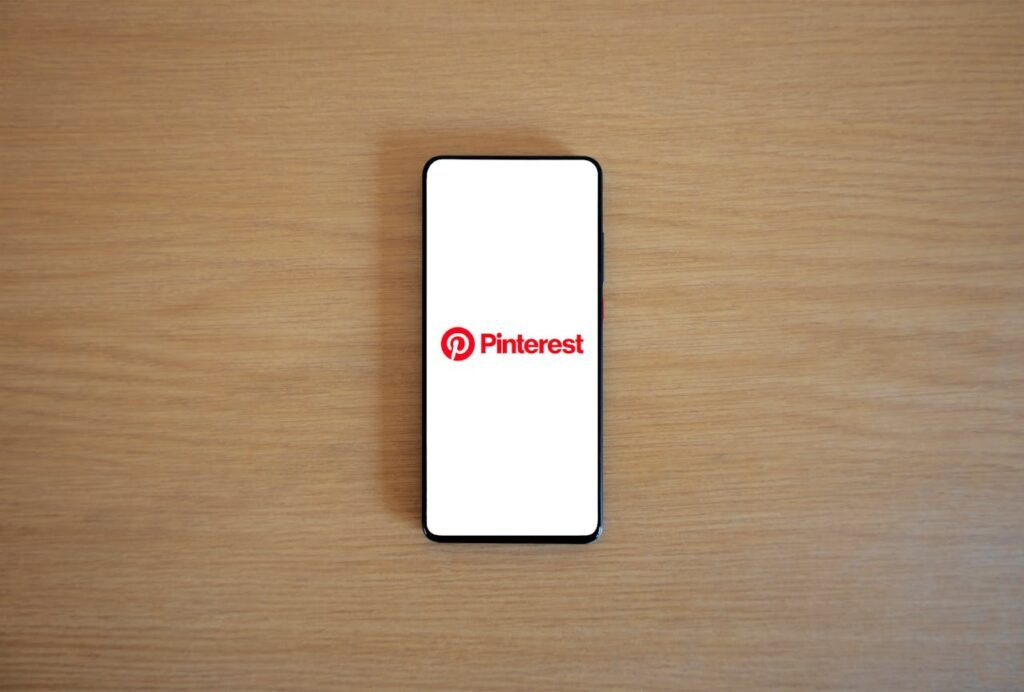In today’s digital age, social media has become a powerful tool for driving social change. From raising awareness about important issues to mobilizing communities for action, the potential of social media to create real-world impact is immense. This article will explore how to effectively leverage social media for social change projects, providing you with actionable strategies to amplify your message, engage your audience, and drive meaningful change.
Understanding Your Cause

Before you can effectively leverage social media for your social change project, it’s crucial to have a deep understanding of your cause. This foundation will inform your strategy, messaging, and tactics, ensuring that your efforts are aligned and impactful. Here’s how to strategically dive deeper into understanding your cause.
Define Your Goals with Precision
Start by clearly defining what you want to achieve with your social change project. Broad goals can be difficult to measure, so it’s essential to break them down into specific, actionable objectives.
Identify your primary goal and any secondary objectives. For example, if your cause is environmental conservation, your primary goal might be to reduce plastic waste in your community. Secondary objectives could include educating the public about recycling practices, partnering with local businesses to reduce plastic use, and advocating for policy changes.
Use the SMART criteria to set your goals: Specific, Measurable, Achievable, Relevant, and Time-bound. This ensures that your goals are clear and attainable, providing a solid foundation for your social media strategy.
Conduct a SWOT Analysis
A SWOT analysis (Strengths, Weaknesses, Opportunities, Threats) can provide a comprehensive understanding of your cause and the context in which you’re operating.
Identify your strengths – what resources, skills, and advantages does your organization have? This could include a strong volunteer base, expertise in the issue, or existing partnerships with other organizations.
Acknowledge your weaknesses – what are the areas where you lack resources or expertise? Recognizing these can help you address them proactively or find partners who can support these areas.
Look for opportunities – what external factors can you leverage to advance your cause? This could be trends in public opinion, changes in policy, or technological advancements.
Be aware of threats – what external challenges could hinder your efforts? This could include political opposition, competing organizations, or economic downturns.
Using this analysis, you can develop a strategy that maximizes your strengths, addresses your weaknesses, takes advantage of opportunities, and mitigates threats.
Deep Dive into Your Cause’s Landscape
Understanding the broader landscape of your cause helps you position your efforts effectively. Research other organizations working in the same area, understand their strategies, successes, and challenges.
Map out the key stakeholders involved in your cause. These can include government agencies, non-profits, community groups, businesses, and individuals. Understanding their roles and interests helps you identify potential allies and opponents.
Analyze current trends and data related to your cause. Use reports, academic studies, and news articles to gather information. This helps you stay informed about the latest developments and adjust your strategy accordingly.
Know Your Audience Deeply
Beyond basic demographics, delve into the psychographics of your audience. Understand their values, motivations, and behaviors. What drives them to support a cause? What barriers do they face in taking action?
Segment your audience into different groups based on these insights. For example, you might have one segment that is highly engaged and ready to volunteer, while another is interested but needs more information and encouragement to take action.
Create detailed audience personas for each segment. These personas should include demographic information, key motivations, preferred communication channels, and typical behaviors. Use these personas to tailor your messaging and tactics for each segment.
Identify Core Messages and Storylines
Crafting clear and compelling messages is essential for engaging your audience. Start by identifying the core messages that you want to convey about your cause. These should be aligned with your goals and resonate with your audience’s values and motivations.
Develop key storylines that bring your messages to life. Stories are powerful tools for making your cause relatable and memorable. They should highlight real people and real impacts, showing how your cause makes a difference.
Create a message map that outlines your key messages, supporting points, and example stories. This helps ensure consistency across all your communications and provides a reference for everyone involved in your social media efforts.
Evaluate and Refine Your Value Proposition
Your value proposition is the unique benefit that your cause offers to your audience. It’s what makes your cause stand out and motivates people to support you.
Evaluate your current value proposition and refine it to make it as compelling as possible. Ask yourself why someone should support your cause over others. What unique impact do you offer? How do you make it easy for people to get involved?
Communicate your value proposition clearly in all your social media content. Make sure it’s front and center in your profiles, posts, and calls to action. This helps potential supporters quickly understand the benefits of getting involved.
By thoroughly understanding your cause, you can develop a social media strategy that is focused, effective, and impactful. Each step – from defining your goals and conducting a SWOT analysis to knowing your audience and refining your value proposition – ensures that your efforts are strategic and aligned with your mission. This deep understanding lays the groundwork for leveraging social media to drive meaningful social change.
Building a Strong Social Media Presence
Creating a strong social media presence is essential for the success of any social change project. A robust online presence helps you reach a wider audience, engage your community, and amplify your message. Here are strategic and actionable steps to build a powerful social media presence for your social change project.
Choose the Right Platforms
Not all social media platforms are created equal. Each platform has its own strengths and caters to different demographics and types of content. Choosing the right platforms for your social change project is essential for reaching your target audience effectively.
Conduct research to understand where your target audience spends their time online. For instance, if you’re targeting a younger demographic, platforms like Instagram and TikTok may be more effective. For professional networking and policy advocacy, LinkedIn is a better choice. Facebook and Twitter are versatile and can be used for sharing articles, updates, and engaging with a broad audience.
Once you’ve identified the right platforms, focus your efforts on creating and sharing content that is tailored to each platform’s unique features and audience preferences.
Optimize Your Profiles
Your social media profiles are often the first point of contact for potential supporters. Ensure that your profiles are fully optimized to convey your message effectively and attract followers.
Use a consistent handle across all platforms to make it easy for people to find you. Your profile picture should be your logo or a recognizable image that represents your cause. Write a compelling bio that clearly explains your mission and includes a call to action, such as a link to your website or a donation page.
Use cover photos and pinned posts to highlight important information or current campaigns. Make sure your contact information is up-to-date and include links to all your social media profiles on your website and email signatures.
Create Compelling Content
Content is king in the world of social media. To capture attention and drive engagement, your content must be compelling, relatable, and shareable.
Develop a content strategy that includes a mix of content types to keep your audience engaged. This can include images, videos, infographics, articles, and personal stories. Visual content tends to perform well across all platforms, so invest in high-quality images and videos that convey your message effectively.
Storytelling is a powerful tool for social change. Share stories that highlight the impact of your cause and the real-life experiences of those affected. Personal stories humanize your cause and make it more relatable, encouraging your audience to take action.
Engage Consistently
Consistency is key to building a strong social media presence. Regularly posting content and engaging with your audience helps keep your cause top of mind and fosters a sense of community.
Develop a content calendar to plan and schedule your posts in advance. This ensures a steady stream of content and helps you stay organized. Tools like Hootsuite, Buffer, and Later can help you schedule and manage your posts across multiple platforms.
Engage with your audience by responding to comments, messages, and mentions. Show appreciation for their support and encourage discussions. Building a community around your cause increases loyalty and encourages more people to get involved.
Use Analytics to Guide Your Strategy
Social media analytics provide valuable insights into the performance of your content and the behavior of your audience. Use these insights to refine your strategy and improve your engagement.
Track key metrics such as reach, engagement, click-through rates, and conversions. Identify which types of content perform best and which times of day yield the highest engagement. Use this data to optimize your posting schedule and content strategy.
Regularly review and adjust your strategy based on your analytics. Experiment with different types of content, posting times, and engagement tactics to see what works best for your audience.
Leverage Hashtags
Hashtags are a powerful way to increase the visibility of your posts and connect with a broader audience. Create a unique and memorable hashtag for your campaign to encourage user participation and make it easier to track engagement.
Research popular hashtags related to your cause and include them in your posts to reach a wider audience. Tools like Hashtagify and RiteTag can help you find relevant hashtags with high engagement.
Encourage your followers to use your campaign hashtag when sharing their own content related to your cause. This not only increases visibility but also fosters a sense of community and involvement.
Collaborate with Influencers
Partnering with influencers can dramatically extend your reach and lend credibility to your cause. Identify influencers who are passionate about your cause and have a substantial following.
Reach out to influencers with a personalized message explaining your cause and how they can help. Offer them meaningful ways to get involved, such as co-hosting events, creating content, or sharing personal stories.
Leverage the influencer’s platform to introduce your cause to their followers. Their endorsement can drive significant traffic and engagement, increasing the overall impact of your campaign.
Utilize Paid Advertising
Strategically using paid advertising can boost your social media presence and reach a larger audience. Platforms like Facebook, Instagram, and LinkedIn offer targeted advertising options that can help you reach your ideal supporters.
Create eye-catching ads with strong calls to action. Use targeted demographics to ensure your ads reach the right audience. For example, if you’re advocating for mental health awareness, target individuals who have shown interest in related topics.
Monitor the performance of your ads and adjust your strategy as needed. Use A/B testing to determine which ad creatives and messaging resonate best with your audience. This data-driven approach can help you maximize your ad spend and ensure a high return on investment.
Build Partnerships and Collaborations
Building partnerships with other organizations, brands, and community groups can enhance your social media presence and provide new opportunities for engagement.
Identify potential partners who share your values and goals. Collaborate on joint campaigns, co-host events, or cross-promote each other’s content. Partnerships can amplify your reach and bring new perspectives and resources to your cause.
Highlight your partnerships on social media to show your audience that you are part of a broader movement. This not only adds credibility to your cause but also demonstrates your commitment to collaboration and collective impact.
Leveraging Social Media Campaigns
A well-executed social media campaign can significantly amplify your social change efforts. To make the most impact, it’s essential to develop a clear strategy and use a variety of tactics to engage your audience. Here are some advanced strategies to leverage social media campaigns effectively.
Develop a Comprehensive Campaign Strategy
A successful social media campaign begins with a detailed strategy that outlines your objectives, target audience, key messages, and tactics. For startup founders, this means clearly defining the change you wish to see and aligning your campaign efforts accordingly.
Start by setting specific, measurable goals for your campaign. These could include increasing awareness, driving donations, mobilizing volunteers, or influencing policy. Use the SMART criteria (Specific, Measurable, Achievable, Relevant, Time-bound) to ensure your goals are well-defined and achievable.
Identify the key messages that will resonate with your target audience. These messages should be consistent across all your campaign content and should clearly communicate the impact and importance of your cause. Develop a content calendar that outlines the types of content you will post, the platforms you will use, and the frequency of your posts.

Utilize Storytelling to Create Emotional Connections
Storytelling is a powerful tool for creating emotional connections with your audience. Use stories to highlight the real-life impact of your cause and to show the human side of your social change efforts.
Create a series of posts that tell the stories of individuals affected by your cause. Use a mix of photos, videos, and written narratives to make these stories compelling and relatable. Highlight personal journeys, successes, and challenges to show the tangible impact of your work.
Encourage your followers to share their own stories related to your cause. This user-generated content not only adds authenticity to your campaign but also fosters a sense of community and involvement.
Leverage Video Content
Video content is highly engaging and can be a powerful way to communicate your message. Use videos to tell stories, share updates, and provide behind-the-scenes glimpses of your work.
Create short, impactful videos that highlight key aspects of your campaign. Use a mix of live-action footage, interviews, and animations to keep your content diverse and engaging. Share these videos on platforms like Instagram, Facebook, YouTube, and TikTok to reach a broad audience.
Host live video sessions to engage with your audience in real-time. Use platforms like Instagram Live, Facebook Live, or YouTube Live to host Q&A sessions, interviews with experts, or live updates from events. Encourage your audience to participate by asking questions and sharing their thoughts.
Use Data and Infographics
Data and infographics can help communicate complex information in a visually appealing and easily digestible format. Use these tools to share important statistics, trends, and insights related to your cause.
Create infographics that highlight key data points and trends. Use a consistent color scheme and branding elements to make your infographics visually appealing and recognizable. Share these infographics on your social media platforms and encourage your followers to share them with their networks.
Use data-driven content to support your key messages and demonstrate the impact of your work. For example, if your campaign focuses on reducing plastic waste, share statistics about the environmental impact of plastic pollution and the benefits of reducing plastic use.
Implement Social Media Advertising
Social media advertising can help you reach a larger audience and increase the impact of your campaign. Use targeted ads to reach specific demographics and amplify your message.
Create eye-catching ads with strong calls to action. Use high-quality visuals and compelling copy to capture attention and encourage engagement. Target your ads based on demographics, interests, and behaviors to ensure they reach the right audience.
Monitor the performance of your ads and adjust your strategy as needed. Use A/B testing to determine which ad creatives and messaging resonate best with your audience. Track key metrics such as reach, engagement, click-through rates, and conversions to measure the effectiveness of your ads.
Engage Influencers and Ambassadors
Partnering with influencers and ambassadors can significantly extend your reach and lend credibility to your campaign. Identify individuals who are passionate about your cause and have a substantial following.
Reach out to influencers with a personalized message explaining your cause and how they can help. Offer them meaningful ways to get involved, such as co-hosting events, creating content, or sharing personal stories. Leverage the influencer’s platform to introduce your cause to their followers and drive engagement.
Create an ambassador program to enlist dedicated supporters who can help promote your campaign. Provide them with resources, training, and incentives to support their efforts. Highlight their contributions on your social media channels to show appreciation and encourage others to get involved.
Utilize Contests and Challenges
Contests and challenges can be a fun and engaging way to promote your campaign and encourage participation. Create activities that motivate your audience to take action and share their experiences.
Design a social media challenge related to your cause. For example, if your campaign focuses on healthy living, create a fitness challenge that encourages participants to share their progress using a specific hashtag. Offer prizes for the most creative or impactful entries to incentivize participation.
Run contests that require participants to share your campaign on their social media for a chance to win prizes. Create a unique hashtag for the contest and encourage participants to use it. This not only increases engagement but also expands your reach as participants share with their networks.
Analyze and Optimize Your Campaign
Regularly analyzing the performance of your campaign is crucial for making data-driven decisions and optimizing your strategy. Use social media analytics tools to track key metrics and gain insights into your audience’s behavior.
Monitor engagement metrics such as likes, comments, shares, and views to understand how your content is performing. Track website traffic and conversions to measure the impact of your social media efforts on your overall goals.
Use these insights to adjust your strategy and improve your campaign. Identify which types of content and tactics are most effective and focus your efforts on these areas. Continuously test and refine your approach to ensure your campaign remains relevant and impactful.
Engaging Your Community
Engaging your community is vital for the success of any social change project. Social media provides an excellent platform to build and nurture a supportive community around your cause. Here are some strategic and actionable methods to engage your community effectively.
Foster User-Generated Content
User-generated content (UGC) is a powerful way to engage your community and create authentic content for your social media channels. Encourage your followers to share their stories, photos, and videos related to your cause.
Create campaigns that invite your community to participate in content creation. For example, launch a challenge where participants share their personal experiences or actions they’ve taken to support your cause. Use a specific hashtag to track submissions and create a sense of unity among participants.
Feature the best UGC on your social media channels, giving credit to the creators. This not only provides you with valuable content but also makes your followers feel valued and recognized. Highlighting user stories can inspire others to get involved and share their own experiences.
Host Virtual Events and Webinars
Virtual events and webinars are excellent for real-time engagement and building a deeper connection with your audience. Use platforms like Zoom, Instagram Live, Facebook Live, or YouTube Live to host these events.
Plan your virtual events around relevant topics and promote them in advance to build anticipation. Invite experts, activists, or influencers to participate and share their insights. This not only adds credibility to your event but also attracts a larger audience.
During the event, encourage your audience to ask questions and participate in discussions. Use interactive features like polls, Q&A sessions, and chat to keep the audience engaged. After the event, share highlights and recordings on your social media channels to reach those who couldn’t attend live.
Develop a Community Forum
Creating a dedicated online forum or group for your cause can provide a space for ongoing discussions and community building. Platforms like Facebook Groups, Reddit, or dedicated forum software can be used to create these spaces.
Encourage members to share their thoughts, ask questions, and provide support to one another. Actively participate in the discussions to guide conversations and provide valuable insights. Regularly share updates, resources, and success stories to keep the community engaged.
Moderate the forum to ensure a positive and respectful environment. Establish clear guidelines and rules for participation to foster a supportive community. Highlighting active members and their contributions can motivate others to participate more actively.
Share Success Stories and Impact
Regularly sharing success stories and the impact of your efforts keeps your audience motivated and engaged. Highlight the positive outcomes of your campaigns and the difference your community is making.
Create compelling narratives that showcase real-life examples of how your cause has impacted individuals or communities. Use a mix of photos, videos, and written stories to convey these successes. Feature interviews with beneficiaries, volunteers, and partners to provide diverse perspectives.
Thank your supporters and acknowledge their contributions. Showing appreciation builds loyalty and encourages continued support. Use visuals and infographics to illustrate the impact of donations, volunteer hours, or other forms of support.
Run Social Media Takeovers

A social media takeover is when a guest (such as an influencer, expert, or community member) temporarily takes control of your social media account to share their perspective and experiences.
Identify individuals who are passionate about your cause and have a strong following. Plan the takeover in advance, providing guidelines and content ideas to ensure it aligns with your brand and goals. Promote the takeover beforehand to build excitement and anticipation.
During the takeover, encourage the guest to share personal stories, behind-the-scenes content, and interact with your audience. This not only provides fresh and diverse content but also introduces your cause to the guest’s followers, expanding your reach.
Create Interactive Content
Interactive content is a great way to engage your audience and encourage participation. Polls, quizzes, contests, and challenges can be fun and engaging, providing value while promoting your cause.
Develop themed quizzes that relate to your cause. For example, if you’re working on a health-related campaign, create a quiz about healthy lifestyle choices. Share the quiz results and encourage participants to share their scores on social media. This not only drives engagement but also spreads awareness of your cause as participants share with their networks.
Run contests that require participants to share your campaign on their social media for a chance to win prizes. Create a unique hashtag for the contest and encourage participants to use it. This not only increases engagement but also expands your reach as participants share with their networks.
Personalized Engagement
Personalized engagement can make your supporters feel valued and appreciated, enhancing their overall experience and fostering loyalty.
Use direct messages, personalized comments, and shout-outs to engage with your followers individually. Thank them for their support, acknowledge their contributions, and respond to their questions and comments in a personal and meaningful way.
Segment your audience and tailor your content to different groups. For example, share targeted resources or follow-up content based on the actions they’ve taken or the feedback they’ve provided. This shows that you’ve listened to their needs and are committed to providing ongoing value.
Utilize Storytelling
Storytelling is a powerful tool for making your cause relatable and memorable. Share stories that highlight the impact of your cause and the real-life experiences of those affected.
Create a series of posts that tell the story of your cause from different angles. Feature personal stories of beneficiaries, volunteers, and supporters. Use a mix of photos, videos, and written narratives to convey these stories compellingly.
Encourage your community members to share their own stories related to your cause. Highlight these stories on your social media channels, giving credit to the storytellers. This not only provides authentic content but also fosters a sense of community and involvement.
Conclusion
Leveraging social media for social change projects is a powerful way to amplify your message, engage your community, and drive meaningful impact. By understanding your cause deeply, building a robust social media presence, developing strategic campaigns, and engaging your audience effectively, you can harness the full potential of social media to advance your mission.
For startup founders, these strategies provide a comprehensive roadmap to creating and sustaining momentum for social change. From setting clear goals and knowing your audience to crafting compelling content and leveraging data-driven insights, each step is crucial for maximizing your social media efforts.
Read Next:
- The Importance of Technical SEO in Financial Services
- On-Page SEO Essentials for Banking Websites
- Keyword Research Basics for Financial Services SEO
- Why SEO is Critical for the Banking Industry
- An Introduction to SEO for Financial Services






















Comments are closed.